Are you tired of your current hairstyle and looking for a way to switch things up? Sew-in hair extensions might just be the solution you’ve been searching for. Whether you want to add volume, length, or both, these extensions offer a quick and convenient way to transform your look. However, with so many options available, it’s important to understand the pros and cons before making a decision. From the versatility and natural appearance to the potential for damage and maintenance requirements, we’ll cover it all. So, if you’re ready to take your hair game to the next level, keep reading to discover everything you need to know about sew-in hair extensions.
What are sew-in hair extensions?
Sew-in hair extensions, also known as weave or weft extensions, are a type of hair extension that is attached to your natural hair using a sewing technique. The extensions are typically made from real human hair or high-quality synthetic materials, and they come in various lengths, colors, and textures to match your desired look. The process involves braiding your natural hair into cornrows and then sewing the weft of hair onto the braids, creating a secure and seamless attachment.

Sew-in hair extensions offer a more long-lasting and natural-looking result compared to clip-in extensions. They can be styled, washed, and treated just like your own hair, allowing for endless possibilities in terms of hairstyles and versatility. Whether you want to add length to your short hair, enhance your natural volume, or experiment with different hair colors and styles, sew-in hair extensions can help you achieve the desired look.
However, it’s important to note that sew-in hair extensions require professional installation and regular maintenance to ensure they stay in good condition and prevent damage to your natural hair. It’s also crucial to choose the right type of extensions that suit your hair type, lifestyle, and personal preferences. Let’s explore the pros and cons of sew-in hair extensions to help you make an informed decision.
Pros of sew-in hair extensions
1. **Natural appearance**: Sew-in hair extensions are known for their natural appearance. When properly installed, they seamlessly blend with your natural hair, giving the illusion of longer and fuller locks. The extensions are attached close to the scalp, ensuring a natural hairline and preventing any visible tracks.
2. **Long-lasting**: Unlike temporary hair extensions like clip-ins, sew-in hair extensions can last for several weeks or even months with proper care. This makes them a popular choice for individuals looking for a more semi-permanent solution to enhance their hair.

3. **Versatility**: Sew-in hair extensions offer endless styling possibilities. You can curl, straighten, or even color the extensions to match your desired look. Whether you want to achieve a sleek and polished style or go for voluminous curls, sew-in hair extensions can help you achieve any hairstyle you desire.
4. **Hair protection**: When installed correctly, sew-in hair extensions can provide protection to your natural hair. By braiding your natural hair before attaching the extensions, you reduce the risk of heat damage and over-styling, allowing your hair to grow and recover.
5. **Low maintenance**: Once sew-in hair extensions are properly installed, they require minimal maintenance compared to other types of extensions. You can wash, condition, and style them just like your natural hair, making them convenient for individuals with busy lifestyles.
6. **Hair growth**: Sew-in hair extensions can promote hair growth by providing a protective environment for your natural hair. The extensions help to shield your hair from external factors such as heat, pollution, and harsh styling, allowing it to grow longer and healthier.
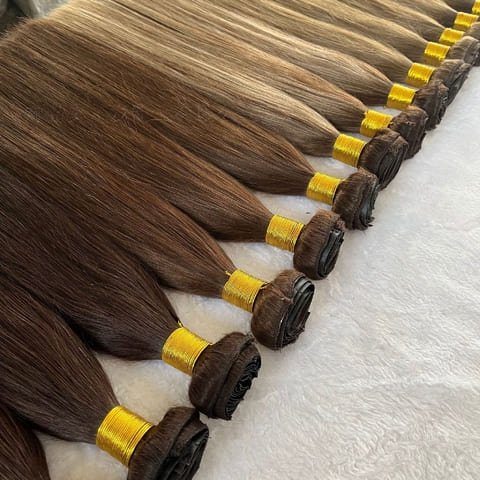
7. **Confidence boost**: One of the major benefits of sew-in hair extensions is the confidence boost they can provide. With longer, fuller, and more voluminous hair, you may feel more confident and empowered, ready to take on the world with a new and improved look.
Although sew-in hair extensions offer numerous advantages, it’s important to consider the potential drawbacks before making a decision. Let’s take a look at the cons to help you make an informed choice.
Cons of sew-in hair extensions
1. **Installation time**: Sew-in hair extensions require professional installation, and the process can be time-consuming. The average installation session can take several hours, depending on the desired style and the amount of hair being added. This may not be suitable for individuals with limited time or those who prefer quick and easy solutions.
2. **Initial discomfort**: The first few days after getting sew-in hair extensions can be uncomfortable. The tightness of the braids and the weight of the extensions can cause some discomfort and tension on your scalp. However, this sensation usually subsides after a few days as you get used to the extensions.
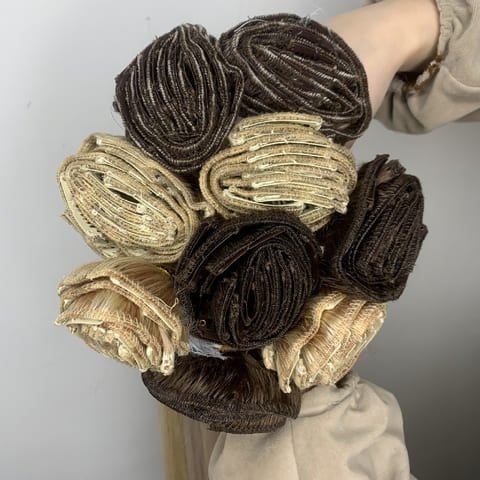
3. **Potential for damage**: Improper installation or neglecting proper maintenance can lead to damage to your natural hair. The weight of the extensions, combined with the tension from the braids, can cause breakage and hair loss if not properly cared for. It’s important to follow the aftercare instructions provided by your hairstylist and avoid excessive pulling or tugging on the extensions.
4. **Maintenance requirements**: While sew-in hair extensions are relatively low maintenance once installed, they still require some care and attention. You will need to wash and condition the extensions regularly to keep them clean and prevent product buildup. Additionally, you may need to revisit your hairstylist for touch-ups or adjustments every few weeks to ensure the extensions stay secure and in good condition.
5. **Limited access to the scalp**: With sew-in hair extensions, your natural scalp is covered by the extensions, making it difficult to access your scalp for cleansing and moisturizing. It’s important to pay extra attention to your scalp health and use lightweight hair products that won’t cause buildup.
6. **Cost**: Sew-in hair extensions can be more expensive compared to other types of hair extensions. It’s important to consider your budget and weigh the cost against the benefits before making a decision.
While the cons of sew-in hair extensions are worth considering, they can be mitigated with proper installation, maintenance, and care. Next, let’s explore the factors you should consider before getting sew-in hair extensions.
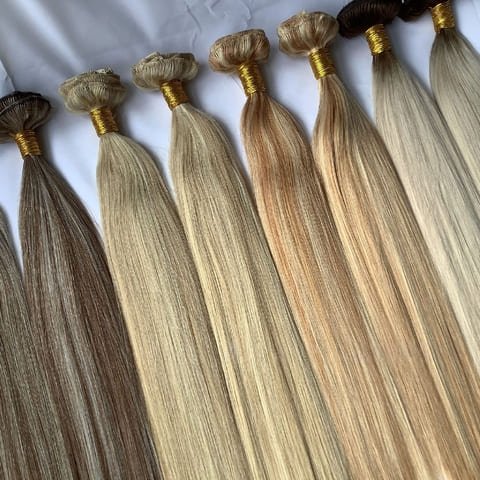
Factors to consider before getting sew-in hair extensions
1. **Hair type**: It’s important to consider your natural hair type before getting sew-in hair extensions. The texture, density, and length of your hair will determine the type of extensions that will work best for you. Consult with a professional hairstylist who can assess your hair and recommend the most suitable options.
2. **Lifestyle**: Consider your lifestyle and daily activities when choosing sew-in hair extensions. If you lead an active lifestyle or participate in sports or fitness activities, you may want to opt for extensions that are more secure and can withstand physical activities.
3. **Budget**: Determine your budget for sew-in hair extensions.
4. **Maintenance commitment**: Sew-in hair extensions require regular maintenance to ensure they stay in good condition and prevent damage to your natural hair. Consider your willingness and ability to commit to the maintenance routine, including regular washing, conditioning, and touch-up appointments.

5. **Hairstylist expertise**: Choose a hairstylist who has experience and expertise in installing sew-in hair extensions. Look for recommendations, read reviews, and ask for before and after photos of their previous work. A skilled hairstylist will ensure a proper installation and minimize the risk of damage to your natural hair.
By considering these factors, you can make an informed decision and choose the right type of sew-in hair extensions that will suit your needs and preferences. Next, let’s explore how to choose the right type of sew-in hair extensions for you.
How to choose the right type of sew-in hair extensions for you
Choosing the right type of sew-in hair extensions is crucial to achieve the desired look and ensure a comfortable and natural fit. Here are some factors to consider when selecting your extensions:
1. **Hair texture**: Match the texture of the extensions to your natural hair. Whether you have straight, wavy, or curly hair, there are extensions available to match your texture seamlessly.
2. **Hair color**: Choose extensions that closely match your natural hair color or the color you desire. You can also opt for extensions with highlights or ombre effects for a more dramatic look.

3. **Length and volume**: Determine the desired length and volume you want to achieve with the extensions. Consider your lifestyle and personal preferences when deciding on the amount of hair to add.
4. **Quality of hair**: Invest in high-quality hair extensions to ensure a natural look and long-lasting results. Remy human hair extensions are considered the highest quality as they are made from real human hair and have the cuticles intact, providing a smooth and silky texture.
5. **Attachment method**: There are different attachment methods available for sew-in hair extensions, including traditional sew-in, micro-link, and tape-in. Consult with a professional hairstylist to determine the best method for your hair type and desired outcome.
Consulting with a professional hairstylist is essential in choosing the right type of sew-in hair extensions. They can assess your hair, guide you through the decision-making process, and recommend the most suitable options for you. Next, let’s explore how to prepare your natural hair for sew-in hair extensions.
How to prepare your natural hair for sew-in hair extensions
Proper preparation of your natural hair is crucial to ensure a successful and long-lasting installation of sew-in hair extensions. Here are some steps to follow before getting your extensions:
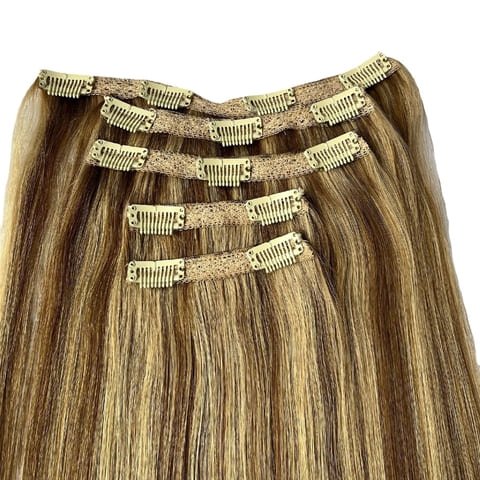
1. **Cleanse and condition**: Wash your hair with a clarifying shampoo to remove any product buildup or residue. Follow up with a deep conditioning treatment to nourish and strengthen your hair.
2. **Trim and treat**: Get a trim to remove any split ends or damaged hair. It’s important to start with a healthy base before adding the extensions. Treat your hair with a protein treatment or moisturizing mask to improve its overall condition.
3. **Scalp health**: Pay attention to your scalp health by gently exfoliating it with a scalp scrub or brush. This helps promote blood circulation and remove any dead skin cells, allowing for a healthier environment for your hair to grow.
4. **Protective styles**: Before getting the sew-in hair extensions, consider wearing your natural hair in protective styles such as braids or twists. This helps to minimize manipulation and reduce the risk of damage during the installation process.

5. **Consultation with a hairstylist**: Schedule a consultation with a professional hairstylist to discuss your desired look, assess your hair, and determine the best approach for your sew-in hair extensions.
By following these steps, you can ensure that your natural hair is in the best possible condition for the sew-in hair extensions installation. Speaking of installation, let’s dive into the process next.
The sew-in hair extensions installation process
The installation of sew-in hair extensions should be done by a professional hairstylist who has experience in working with this technique. Here is a general overview of the installation process:
1. **Consultation**: The hairstylist will have a consultation with you to discuss your desired look, assess your hair, and determine the most suitable type of sew-in hair extensions for you. They will also discuss the expected timeline, cost, and maintenance requirements.
2. **Preparation**: Your natural hair will be cleansed, conditioned, and thoroughly dried before the installation process begins. This ensures a clean and healthy base for the extensions.

3. **Braiding**: The hairstylist will section your hair and create small cornrows close to your scalp. The braids serve as the foundation for attaching the extensions.
4. **Attachment**: The hairstylist will sew the weft of hair onto the braids using a needle and thread. The extensions are attached in a secure and seamless manner, blending with your natural hair.
5. **Styling**: Once the extensions are attached, the hairstylist will style your hair according to your desired look. They may trim the extensions, blend them with your natural hair, or create a specific hairstyle.
6. **Aftercare**: The hairstylist will provide you with aftercare instructions, including how to wash, condition, and style your sew-in hair extensions. They may also schedule follow-up appointments for touch-ups or adjustments.
It’s important to note that the installation process may vary depending on factors such as the type of sew-in hair extensions, your natural hair type, and the expertise of the hairstylist. It’s crucial to choose a professional hairstylist who can provide a seamless and secure installation. Next, let’s explore how to maintain and care for sew-in hair extensions.
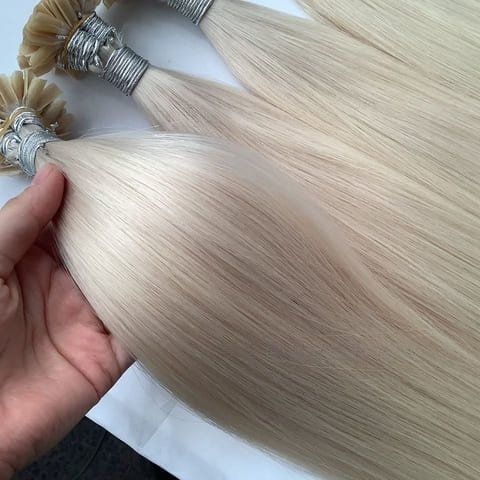
How to maintain and care for sew-in hair extensions
Proper maintenance and care are essential to ensure that your sew-in hair extensions stay in good condition and last as long as possible. Here are some tips to help you maintain and care for your extensions:
1. **Washing**: Wash your sew-in hair extensions regularly to keep them clean and free from product buildup. Use a sulfate-free shampoo and conditioner to avoid drying out the extensions. Gently massage the scalp and rinse thoroughly to remove any residue.
2. **Conditioning**: Apply a leave-in conditioner or a lightweight oil to the extensions to keep them moisturized and prevent them from becoming dry or brittle.
3. **Styling**: You can style your sew-in hair extensions just like your natural hair. However, it’s important to use heat protectant products before using hot styling tools to prevent heat damage. Avoid excessive heat and use a lower heat setting whenever possible.
4. **Brushing**: Use a wide-tooth comb or a brush specifically designed for extensions to detangle your hair gently. Start from the ends and work your way up to avoid unnecessary pulling or tugging on the extensions.
5. **Nighttime routine**: Before bed, tie your hair in a loose braid or wrap it in a silk or satin scarf or bonnet.




